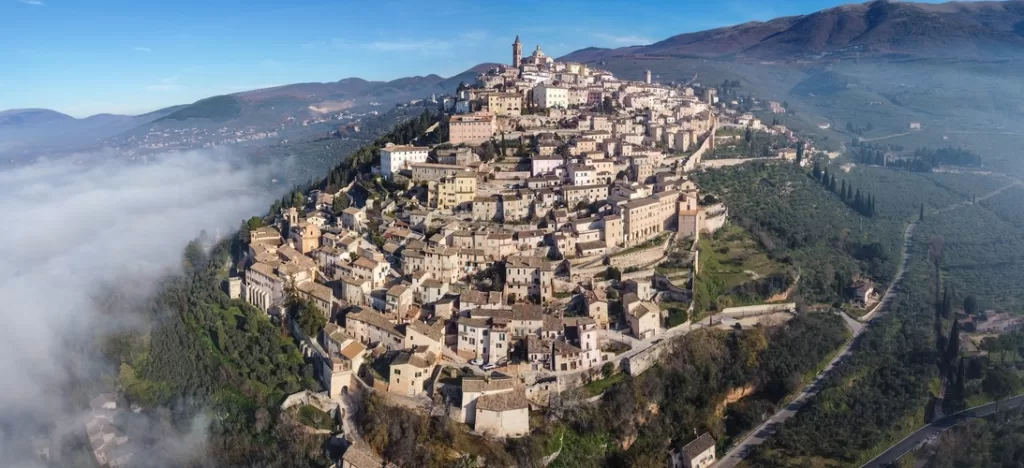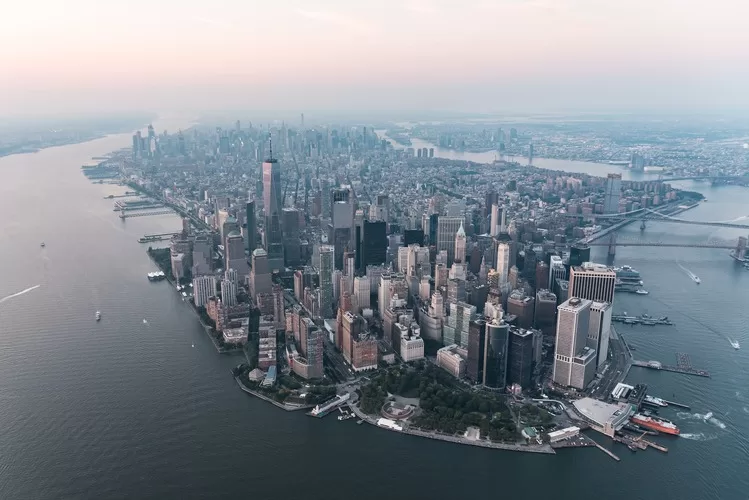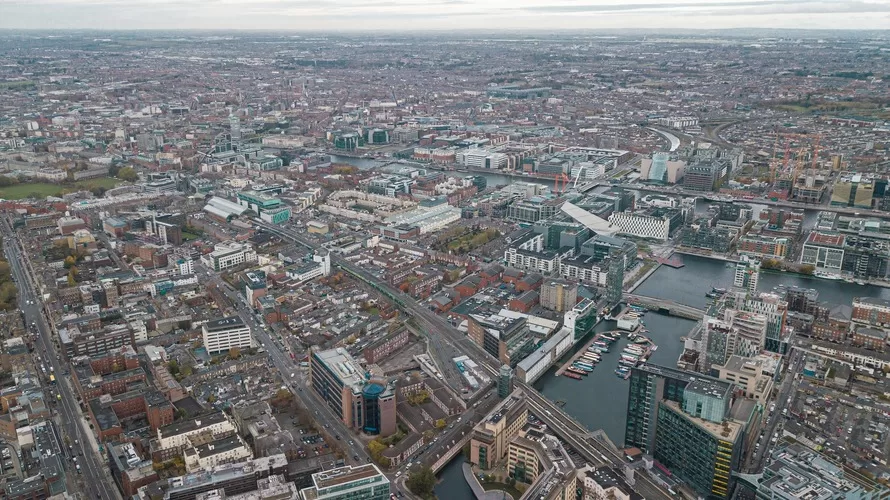In a world defined by constant economic upheavals and global dynamics, every country’s top priority is to increase its wealth and economic dominance. The top 10 richest country in the world, as determined by their per-capita GDP, provide an illuminating glimpse into the many routes to unprecedented prosperity. These states, each with its own economic model and means of creating riches, shape their own destinies in the international arena.
The diversity of assets and strategies, as well as the resilience and adaptability required to rise to the top of the financial world, are on full display in this select group, whose members hail from countries as diverse as the thriving, innovation-driven landscapes of Singapore and Switzerland and the resource-rich powerhouses of Qatar and Norway. Beyond the hard data, these rankings are indicative of a dedication to improving the lives of its residents by investing in infrastructure like hospitals and schools. Wealth is certainly important, but it is not the only indicator of a country’s success; other metrics of social well-being, such as economic equality, environmental sustainability, and social cohesiveness, are also critical.
However, a closer look at the top 10 wealthiest country in the world reveals a complex mosaic of economic landscapes and possibilities, each supported by a distinctive blend of historical background, forward-thinking economic policies, and geographical advantages. As we set out on our expedition to learn more about these economic colossi, we’ll investigate the inspiring tales of drive and creativity that took them to the top of their fields. These countries have left an indelible influence on the global economy through their technical innovation, resource management, financial savvy, and geopolitical strategy. This research demonstrates how complicated wealth is and how different countries deal with the challenges of international finance in different ways.
Table of Contents
Listed below are the Top 10 Richest country in the world 2023:
10. San Marino – 78,926 GDP

In terms of GDP per capita, San Marino is the tenth wealthiest country in the world, at $78,926. This is a remarkable monument to the country’s historical resilience and economic flexibility. Despite being the smallest country in the world (with a population of about 34,000), San Marino has amassed an astounding amount of riches despite its small size and long history as a republic. Its low-income tax rates, which are typically about one-third of the EU average, are a major contributor to the country’s thriving economy. Despite its small size, San Marino has made concerted efforts to bring its fiscal rules and regulations in line with EU and international norms, demonstrating its dedication to international economic cooperation.
San Marino’s unique selling point is its economic resiliency in the face of adversity. This little country has shown amazing resilience in the face of severe economic and energy difficulties. Its industrial and tourist sectors have developed as strong foundations of the economy, displaying resilience during the COVID-19 epidemic and beyond. Despite its small size, San Marino is one of the world’s richest countries because of its population’s fortitude in the face of misfortune and the country’s capacity to adapt and diversify its economy.
09. United States – 80,035 GDP

The United States’ current position as the world’s ninth-richest country (with a GDP of $80,035) reflects the changing nature of international prosperity rankings. The United States (4th largest country in the world) will show the assumption that the richest countries are only the smallest when, in 2020, it finally breaks into the top 10 list after hovering just outside the tenth slot for years. As a result of declining oil costs, petroleum-dependent countries like Qatar, Norway, and the United Arab Emirates fell in the rankings, while Brunei fell out of the top 10 altogether, although this did not prevent them from remaining in the elite club.
The COVID-19 pandemic also ushered in an era of change in the United States, with the government investing heavily to combat the outbreak. In early 2020, the recession was the shortest in U.S. history because of stimulus checks, enhanced food stamp benefits, and expanded Medicaid enrollment. Since the beginning of the epidemic, the American labor market has shown resilience and recovery. However, it confronts problems like as the greatest inflation rate in 40 years, which has had a negative impact on employees’ earnings. The economic resilience and worldwide influence of the United States are shown by the country’s capacity to adapt, adjust, and remain one of the world’s richest countries.
08. Norway – 82,655 GDP

Norway, the eighth wealthiest country in the world with a GDP of $82,655, is a prime example of the advantages and disadvantages of having an economy so heavily reliant on oil. Norway has been riding high on the back of soaring oil prices since the late 1960s when the country first began tapping into its massive offshore oil reserves. At the start of the year 2020, however, things changed dramatically when oil prices plunged and the worldwide pandemic precipitated a precipitous drop in the value of the Norwegian krone. Norway’s GDP fell by its largest amount in half a century in the second quarter of that year, serving as a sharp reminder of the fragility of oil-dependent countries.
Despite these challenges, Norwegians did not see a dramatic decline in their standard of living since the robust Norwegian economy recovered gradually, completing the year with just a -1.2% GDP growth. The Norwegian economy recovered in 2021, expanding by about 3.9%, and it is projected to expand by another 3.3% in 2022. Norway has the biggest sovereign wealth fund in the world at $1.3 trillion, which acts as a buffer against economic uncertainty. Norway has one of the world’s narrowest income inequality gaps, therefore the country’s high per capita GDP estimates accurately represent the economic well-being of its population.
Norway’s resilience and success as one of the world’s richest countries are shown by its ability to manage the ups and downs of its oil-dependent economy and its dedication to eliminating economic disparity.
07. Switzerland – 87,963 GDP

With a GDP per capita of $87,963, Switzerland ranks as the seventh wealthiest nation in the world. Switzerland, a small country in Europe with a population of over 8.7 million, has contributed many useful and enjoyable inventions to the rest of the globe, including the delightful white chocolate and the indispensable Swiss Army knife, computer mouse, and velcro. The country’s riches are based on the success of its banking and insurance industries, its tourist industry, and the export of medicines, diamonds, precious metals, precision instruments (most notably its world-famous timepieces), and sophisticated technology like medical devices and computers.
Without question, when looking at the world’s wealthiest countries, Switzerland stands out as a beacon. Credit Suisse’s 2022 Global Wealth Report states that its citizens have the highest median wealth in the world at $700,00, with one in six citizens having wealth of above $1,000,000 USD. Switzerland now holds the record for the largest concentration of billionaires in the world, thanks to this astounding wealth distribution.
In 2020, Switzerland’s economy also saw the effects of the COVID-19 pandemic, with output falling by 2.5%. Nonetheless, the country’s quick response—including emergency expenditure and containment measures—along with its less-contact-intensive economic structure, competitive export industries, and sound public and personal finances, helped limit the damage.
Despite its economic strength, Switzerland faced serious difficulties. Switzerland’s image as a safe and trustworthy global banking center was tarnished when Credit Suisse almost collapsed in March, prompting a government-engineered bailout by its long-time competitor, UBS Group. Continued economic uncertainty and impending job losses in Switzerland highlight the need for flexibility and attention in this country’s complicated financial environment.
06. United Arab Emirates – 88,221 GDP

The United Arab Emirates (UAE) has had a tremendous economic shift from its historical economic origins to its current position as the world’s sixth wealthiest country with a GDP of $88,221. Once reliant on farming, fishing, and the pearl trade, the country’s economy saw a dramatic transition when oil was discovered in the 1950s. The United Arab Emirates (UAE) is home to a population that is both diverse and cosmopolitan, with historic Islamic buildings coexisting alongside lavish retail malls.
In addition to its natural beauty, the country’s promise of tax-free earnings and year-round sunlight draws workers from all over the world. In fact, native-born citizens make up less than 20% of the population. The United Arab Emirates (UAE) has made great progress in diversifying its economy away from its reliance on oil. Besides the hydrocarbon industry, other important economic drivers include tourism, construction, commerce, and banking. The United Arab Emirates (UAE) showed remarkable fortitude and adaptation in the face of adversity, particularly the COVID-19 epidemic and the resulting swings in oil prices, which temporarily dropped the country off the IMF’s list of the world’s wealthiest nations.
In a short amount of time after the oil price recovery, the United Arab Emirates was once again among the world’s 10 wealthiest nations. The United Arab Emirates has come a long way from its modest economic beginnings to its present stature as a vibrant and successful country in the global arena, and this story of transition and perseverance highlights that.
05. Macao SAR – 89,558 GDP

Macao Special Administrative Region (SAR) has transformed into a stunning metropolis in recent years, rising to the rank of the world’s fifth-richest economy with a GDP of $89,558. The deregulation of the gaming sector in 2001 sparked an economic boom in this special administrative area of the People’s Republic of China, a former Portuguese colony that was once thought to have the potential to become the world’s wealthiest country. Macao, with a population of around 700,000 and a concentration of more than 40 casinos within a limited region of about 30 square kilometers, has quickly grown into a money-making powerhouse, frequently nicknamed the “Las Vegas of Asia.”
After the worldwide travel ban caused by the COVID-19 pandemic, however, Macao momentarily fell out of the top 10 wealthiest countries. Macao’s bustling routine is slowly returning more than three years after the outbreak began. Per capita income has fallen from almost $125,000 in 2019 to over $35,000 less in the present. This makes it the only nation on the list where this has happened. Macao’s unusual history, marked by quick economic ascension, the disruptive difficulties posed by the epidemic, and continuing attempts to restore and sustain its financial success, is reflected in this convoluted trajectory.
04. Qatar – 124,848 GDP

Due to its amazing economic resiliency and smart use of its massive oil, gas, and petrochemical reserves, Qatar has risen to the position of the fourth wealthiest country in the world, with a GDP of $124,848 per capita. In spite of the ups and downs in oil prices since the middle of the 2010s, Qatar’s per capita GDP fell from over $143,222 in 2014 to below $100,000 in the succeeding five years. This number, however, has been on the upward, growing by about $10,000 annually.
The country’s 3 million residents are a striking contrast to its enormous energy resources. That’s why the country has been able to keep its place among the world’s richest for 20 years running thanks to that mix. Due to the fast spread of the virus among low-income migrant workers in overcrowded settings in the first months of the COVID-19 epidemic, Qatar, where only around 12% of the population are Qatari natives, faced unusual difficulties. Qatar has had one of the highest rates of positive cases in the area, despite repeated quarantines, curfews, and lockdowns.
But despite this, Qatar’s economy has shown to be very resilient. In 2020 it shrank by a manageable 3.5 percent, in 2021 it grew by around 1.5 percent, and in 2022 it exploded by 4.2 percent. The country was able to harness its resources and adapt to global problems, preserving its prominent place among the world’s economic elite, and this revival was propelled by rising gas and oil earnings and the inflow of visitors eager to watch the World Cup.
03. Singapore – 133,895 GDP

Singapore, the world’s third-richest country with a GDP of $133,895, is a shelter for business and personal wealth that attracts wealthy people from all over the globe. Li Xiting, creator of medical equipment manufacturer Mindray, has an estimated net worth of $15.6 billion, making him Singapore’s richest citizen. Goh Cheng Liang of Wuthelam Holdings, a renowned maker of paints and coatings, is in third place, just behind real estate developers Robert and Philip Ng. With over $9.6 billion in assets, Eduardo Saverin, co-founder of Facebook, went to Singapore in 2011 for the country’s attraction as a wealthy fiscal haven with tax-free capital gains and dividends.
It is a credit to Singapore’s clever policies and tireless work ethic that the country has gone from having half its people be illiterate and having essentially no natural resources when it gained independence in 1965 to being one of the world’s most business-friendly and successful countries. The adult population of Singapore is 98% literate, and the country is thriving as a manufacturing and financial center. However, Singapore’s resiliency was tested by the COVID-19 epidemic and the accompanying worldwide economic collapse.
After avoiding recession for almost a decade, the economy shrank by 3.9% in 2020, sending the country into its first full-blown downturn in over a decade. Despite a strong 8.8 percent expansion in 2021, Singapore’s manufacturing sector, which accounts for 21.6% of the country’s GDP, shrank by 6% in the first quarter of 2023 owing to the downturn in China, a significant trade partner. In spite of all of these obstacles, experts predict that Singapore’s ever-growing allure and capacity for adaptation will lead to a 1.5% increase in GDP in 2023.
02. Luxembourg – 142,490 GDP

Tourists are drawn to Luxembourg, the second-richest country in the world (per capita income: $142,490), by its many charming castles, beautiful landscapes, vibrant cultural events, and mouthwatering cuisine. Located in the middle of Europe, the Grand Duchy of Luxembourg is home to almost 650,000 inhabitants and a wide variety of attractions and activities for visitors. The country has the greatest quality of living in the Eurozone because it devotes a disproportionate share of its wealth to providing its citizens with first-rate housing, healthcare, and education.
Despite the country’s relative economic stability during the global financial crisis and international efforts to limit banking secrecy, the COVID-19 outbreak posed unexpected obstacles that led to the closure of businesses and the loss of jobs. Nevertheless, compared to other European countries, Luxembourg fared quite well throughout the epidemic. Having contracted by 0.8% in 2020, it sprang back to life in 2021, expanding by a whopping 5.1%. Though the economy grew by 1.5% in 2022, it is expected to increase by just 1.1% in 2023 owing to reasons such as decreased company and consumer confidence and increasing energy and food costs.
Nevertheless, Luxembourg’s astonishing economic ascension continues uninterrupted, despite these hurdles. With a GDP per capita of over $100,000 in 2014, the country has maintained its incredible affluence, further solidifying its position as one of the world’s richest and most habitable.
01. Ireland – 145,196 GDP

Ireland is the wealthiest country in the world per capita, at $145,196, yet despite its small population of 5 million, the country’s economic history is replete with triumphs and setbacks. As a result of the devastating effects of the financial crisis of 2008, the country was forced to implement politically difficult changes such as significant reductions in public-sector pay and a complete overhaul of its banking system. Ireland’s fiscal health was stabilized, employment rates were increased, and GDP per person grew at an exponential pace as a result of these policies.
However, the fact that Ireland is one of the world’s biggest corporate tax havens with a 12.5% corporation tax rate that draws in companies like Apple, Google, Microsoft, Meta, and Pfizer is a crucial part of the country’s economic landscape. The distinctive economic makeup of Ireland is further highlighted by the fact that in 2022, these firms accounted for almost 56% of the total value added to the Irish economy. Despite significant gains in the level of life for Irish households, the national family per-capita disposable income is somewhat lower than the average for the European Union.
This discrepancy reflects a complex problem with the way money is distributed in Ireland. It’s worth noting that the perception of Ireland as the richest country in the world is a nuanced reality that many Irish citizens might find surprising, given the significant income gap between the richest and poorest segments of society (where the top 20% earns nearly five times as much as the bottom 20%). Ireland’s intention to lower its minimal corporation tax rate to the worldwide norm of 15% by 2024 is another evidence of the country’s growing importance in the international financial sector.
Here is the Top 20 Richest Country in the world 2023:
| Rank | Country/Territory | GDP-PPP per capita ($) |
| 1 | Ireland | 145,196 |
| 2 | Luxembourg | 142,490 |
| 3 | Singapore | 133,895 |
| 4 | Qatar | 124,848 |
| 5 | Macao SAR | 89,558 |
| 6 | United Arab Emirates | 88,221 |
| 7 | Switzerland | 87,963 |
| 8 | Norway | 82,655 |
| 9 | United States | 80,035 |
| 10 | San Marino | 78,926 |
| 11 | Brunei Darussalam | 75,583 |
| 12 | Hong Kong SAR | 74,598 |
| 13 | Denmark | 73,386 |
| 14 | Taiwan | 73,344 |
| 15 | Netherlands | 72,973 |
| 16 | Iceland | 69,779 |
| 17 | Austria | 69,502 |
| 18 | Andorra | 68,998 |
| 19 | Germany | 66,132 |
| 20 | Sweden | 65,842 |
In conclusion, the top 10 wealthiest country in the world are a varied group of economic superpowers, each with its own remarkable history of prosperity and perseverance. Each of these countries has taken a unique road to wealth, from Ireland’s recovery from the 2008 financial crisis to Luxembourg and Singapore’s ever-changing skyline. Some countries attract multinational firms and boost their GDP by taking advantage of their reputation as financial hubs and tax havens; others depend on a wide range of sectors, abundant natural resources, or an advantageous geographical location.
While GDP and economic gains are outstanding, underlying complexity remains. The necessity for fair wealth distribution and social welfare programs is highlighted by the fact that income disparity, although not necessarily obvious on the surface, remains a challenge in many of these rich countries. Adaptability in the face of adversity was also put to the test by the worldwide COVID-19 epidemic, with variable degrees of resilience and recovery.
Furthermore, these top 10 richest country must negotiate changing financial landscapes, including pledges to minimal corporation tax rates, as a result of international tax changes and global economic dynamics. Lessons may be learned from their paths to prosperity about the difficulties of wealth production and distribution in today’s linked world, where economic success alone cannot define a nation’s riches but must be weighed against social well-being and inclusion.



